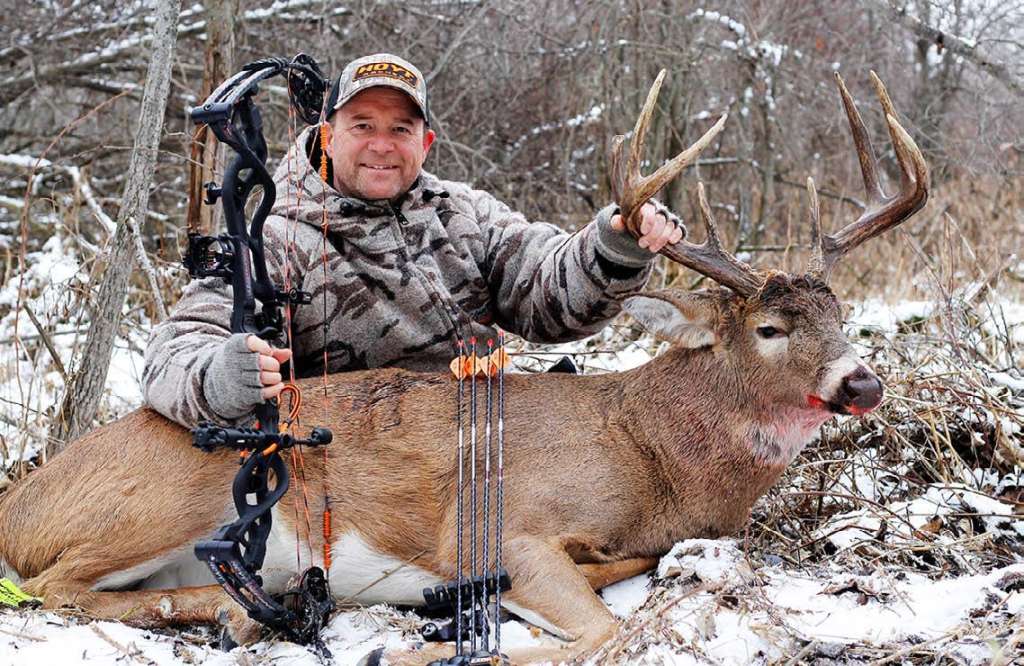For a Variety of Reasons, It’s Important to Wait Before Picking up the Blood Trail After Every Shot
Every experienced bowhunter knows the feeling. We release an arrow, it hits our live target, and the animal runs off. Most often, we have a strong feeling about whether or not it was a good hit. Even still, there’s always that nagging uncertainty. Did it go down? Or am I in for a rodeo?
At one time or another, most of us have mistakenly taken up the blood trail too soon. The result is that we jumped the animal. Best-case scenario, it beds again, we let it expire, and we collect it. Worst case: it takes off, leaves little or no blood trail, and we lose it altogether.
Such is the reality of bowhunting. In time though, and hopefully, early on, we learn to pay close attention to how the animal responds and the importance of waiting for it to expire before following up. The bottom line is this: we all want to retrieve our prize immediately, but is that the right thing to do? Or are we better off waiting? If so, for how long? How we answer these questions depends on a number of variables.
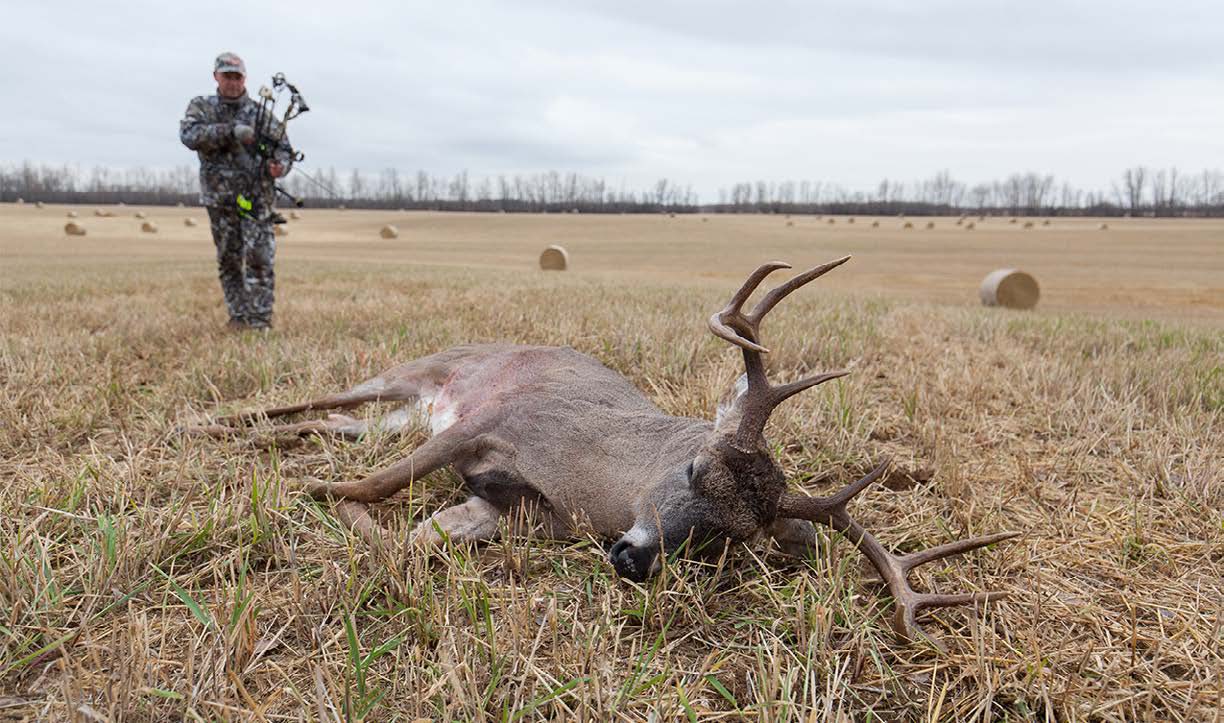
The 45-Minute Rule
Whether you’ve been mentored or educated through the school of hard knocks, if you’re a seasoned bow hunter, you likely know about the 45-minute rule and, if you don’t, you should. Simply put, it’s an unwritten rule of thumb reminding us that after every shot, we need to wait at least three-quarters of an hour before following the blood trail. Indeed, there are exceptions to every rule, but the only exception to this one should be if you can see the animal, and it’s down for the count. Even then, savvy hunters still wait a few minutes before approaching.
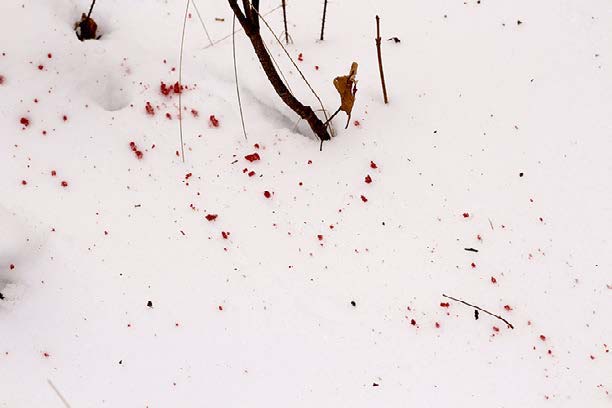
Exceptions
Often, we make a great shot. Placement is perfect. It’s a double-lung pass-through. We can see blood pouring out of the animal’s torso. It runs and collapses in 40 yards or less. It’s obvious that we let the air out of it, and it crashed right before our eyes.
When this happens, we generally don’t need to wait. Even still, I’m a big proponent of taking my time packing up my gear, climbing down out of the stand, or moving in slowly if I’m spot-and-stalk hunting. It usually doesn’t cost anything to take your time and make to certain the animal has expired.
If daylight allows, it’s still good to wait, but exceptions are sometimes in order, such as when Mother Nature throws us a curve ball. For instance, on several occasions, I’ve shot deer in pouring rain or heavy snowfall. The risk of having a blood trail washed away or completely obliterated is very real. In these situations, it’s a judgment call. Just keep in mind though that with each decision, there are consequences. Even with exceptions, it’s still good to wait as long as possible before following up.

Better Safe Than Sorry
A few years ago, on a hunt in Northern Alberta, I had an extra mule deer doe tag in my pocket. With an abundance of does in the area, I decided to fill it. Sneaking in close, the wind was in my favor. I ranged a lone doe at 40 yards. Unaware of my presence, she had her head down. Just like shooting at a 3-D target, I drew back, took my time, locked my sight pin on her chest and released.
My FMJ entered the bottom third of the chest tight to her shoulder and, because she was quartered slightly toward me, it exited halfway back on the opposite side. Jumping and then trotting toward me, she seemed oblivious to what had happened. The doe covered a distance of 30 yards, slowed, and immediately bedded down in the standing canola.
Some distance away, my hunting partner was watching through his binoculars. As I looked toward him, he motioned that her head was still up, so I backed away and joined him. For 25 minutes, we watched intently and finally her head dropped. My partner was convinced it was done, but I wasn’t so sure. I’ve been bowhunting for decades and I’ve seen just about everything there is to see when it comes to arrow wounds. The one thing I know for certain is that every shot is different, and unless you play your cards right, you stand to lose game that isn’t hit properly. So, sound decision-making is critical. In this case, I broke the 45-minute rule, and I jumped the gun to appease my curiosity.
The shot placement was decent, but because she’d been slightly quartering toward me, I only took out one lung and passed through the diaphragm and liver. Approaching slowly, with an arrow nocked, I went to full draw and covered the last 20 yards with the notion of launching a finishing shot if necessary.
Motionless, she looked to be down for the count. Then, all of a sudden, she sprang to her feet and bolted. Visibly weak and in an effort to escape, she made it to the nearby patch of willows. Dumbfounded, I could hardly believe my eyes. I reprimanded myself for not waiting the 45 minutes.
Fast-forwarding another 15 minutes, I carefully eased into where she’d gone into the cover and walked right to my doe. She had expired almost immediately. Despite the lethal trauma inflicted by a fixed four-blade Muzzy broadhead, she still had enough life to get up and go after 30 minutes.
So, what’s the moral of this story? In retrospect, it was a lesson for me, and it should be for all of us. Whenever possible, wait at least the 45 minutes before following up on the shot.
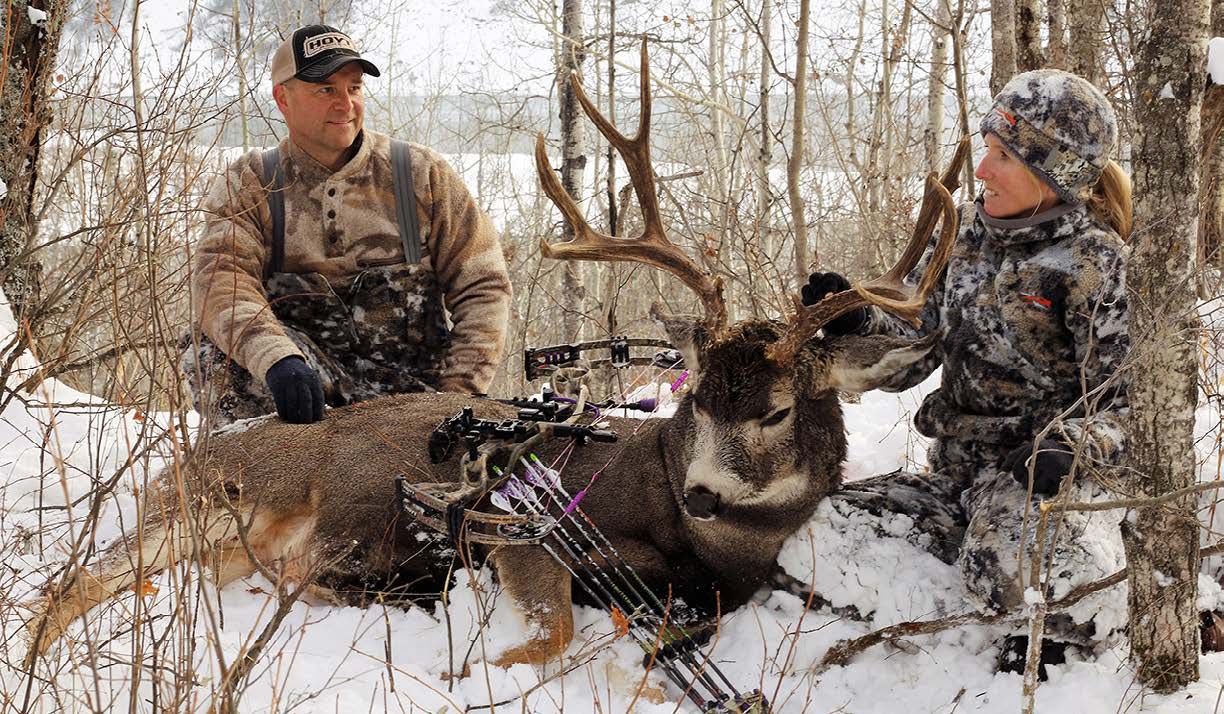
Less Than Ideal Shots?
Sad but true, too many bowhunters lose game each year because they fail to wait before following up on their shots. I remember watching an elk-hunting video produced by famed bow hunter Larry D. Jones almost 20 years ago. After a less-than-perfect shot, he and partner Dwight Schuh were adamant about waiting at least 45 minutes before following up. I’m normally militant about this rule myself, even if I think my shot was solid.
So, why did I break the 45-minute rule on that doe hunt? Basically, because we’d seen her head go down and she appeared to be motionless. Was it the right decision? No.
We all get excited in the heat of the moment. We’re anxious to collect our prize, but in the end it’s all about making the right decisions. These decisions ultimately determine the outcome of our hunt, whether we retrieve or potentially lose game.
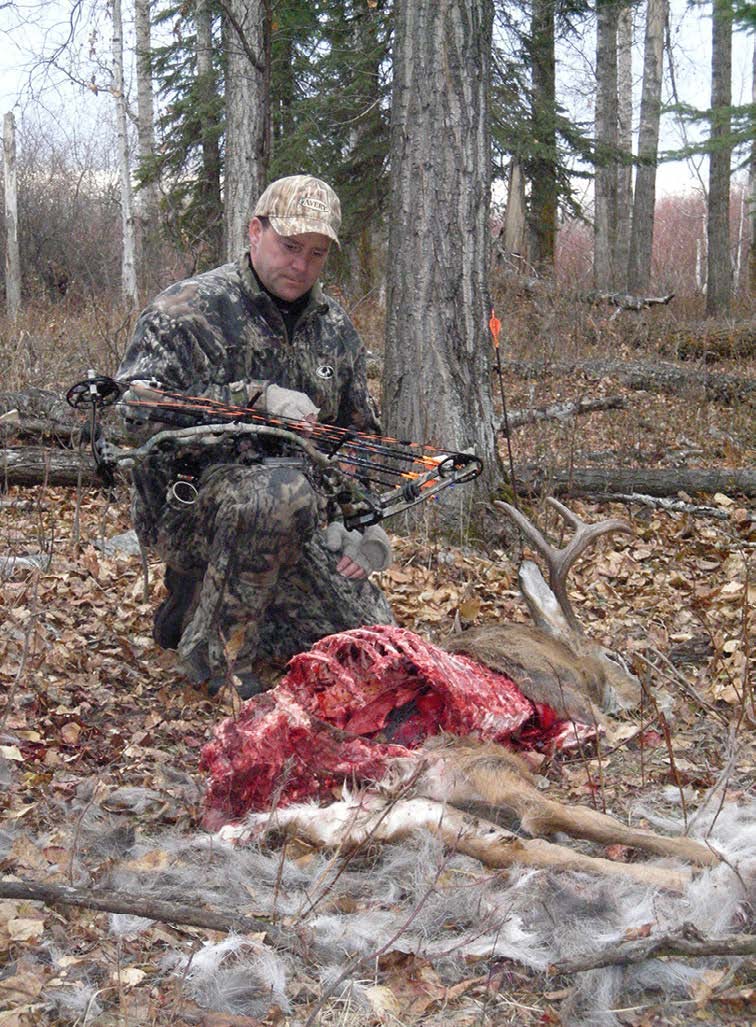
Consider Blood Sign
Unwritten tenets like the 45-minute rule aren’t copyrighted. They’re derived from experience. Even still, every bowhunter should evaluate their shot, how the animal reacted on impact and the amount of time that has passed since the shot. We then have to evaluate and determine whether 45 minutes is enough or if we should back out and wait longer.
Shot placement can be the most important factor when determining when and how to begin tracking shot game. Your first consideration should be where the arrow penetrated the animal. A double-lung or heart shot will most often result in an immediate kill. A single lung hit can complicate things. Know that if the heart, lungs, major arteries or liver have been damaged, your chances of retrieving the game increase greatly.
Likewise, a gut shot can spell disaster. In the end, it’s about getting that broadhead into the most vascular place possible to ensure massive hemorrhaging, a good blood trail, and a quick kill.
Most importantly, consider the angle and how the animal was standing. Was it standing broadside, quartering away or quartering toward? Did it race away with its belly too low to the ground, or did it run and then slow down still in sight? Did it stagger and collapse, or vanish in cover? These are all important aspects to note when determining how long to wait.
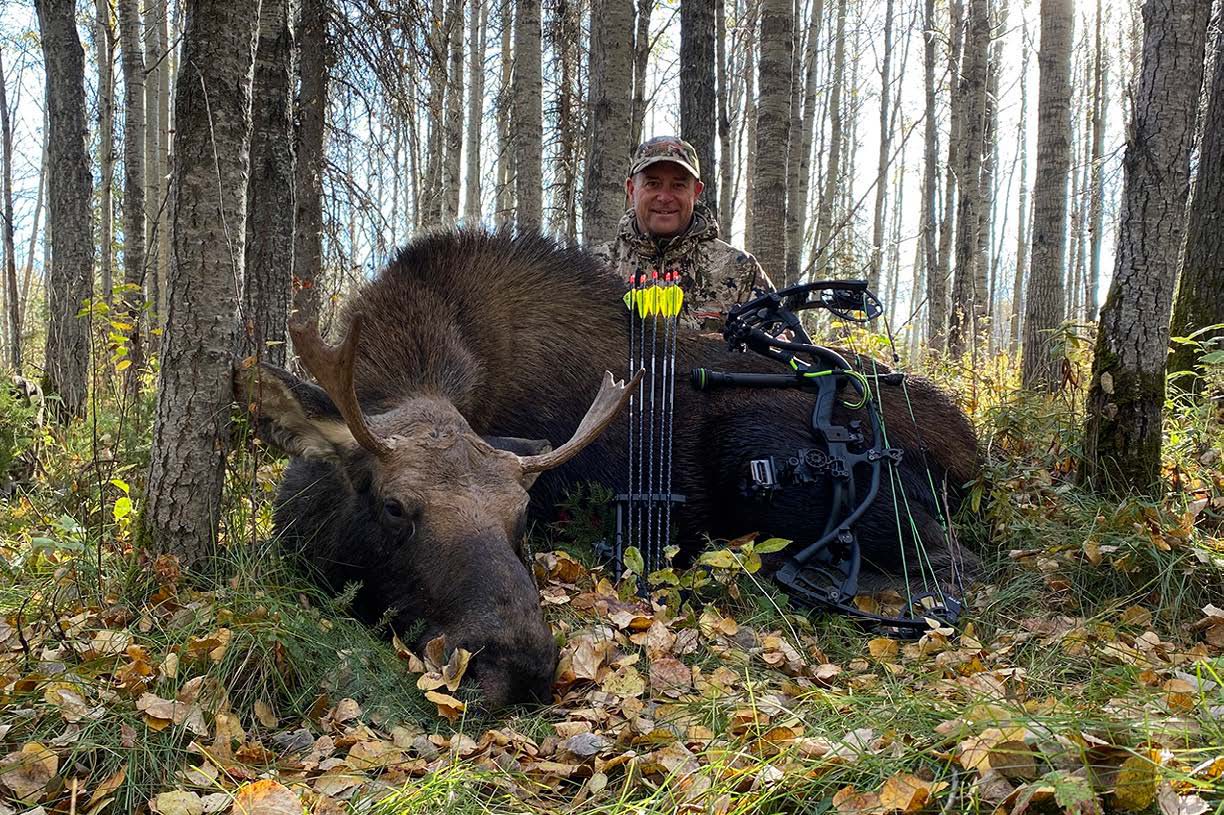
For instance, if we know the shot was back and the animal was bucking while it ran away, it may be a gut shot. Best-case scenario with a bad hit like this is that the broadhead penetrated the liver. With this kind of hit, an animal will often run long distances (e.g., several hundred yards and often much more), before slowing down or bedding. Then, you can anticipate a sparse blood trail and always will want to wait at least four hours before tracking. If it’s a liver hit, the animal will weaken and expire around the four-hour mark. Follow up too quickly and you risk jumping it, and potentially losing it forever.
As far as blood sign goes, after 15 minutes, I usually move to the point of impact and begin looking for blood. Even when I find it, I usually still wait the 45 minutes. If I’m confident in my shot placement, and I find bright red blood with bubbles in it, I know it was a lung hit and I usually retrieve the animal within 40 yards.
If, on the other hand, the blood is watery or sparse and dark, I know that’s not good. Waiting is in order, and it comes down to a judgment call. Evening hunts where shots are taken during the waning minutes of legal light are the worst. In many instances, I’ve left the animal overnight. On one occasion, even though I felt the shot placement was good, but just wasn’t 100% sure, I found the animal in the morning, already devoured by coyotes. No one likes it when this happens, but it’s a harsh reality of bowhunting–especially in areas with high predator populations.

Approaching Downed Game
Regardless of how long you’ve waited… (or didn’t) and how good or bad you think your shot placement was, always approach downed game with caution. Even if an animal looks like it’s expired, it may not be.
Always approach downed game with an arrow nocked, and when in doubt, with your bow drawn. At least if you’re ready, you can try to get an arrow into the boiler room at close range. I know some folks believe in poking the animal in the eye to make sure it is dead. I don’t feel that’s necessary, but I do believe in giving it a nudge with my foot, usually from the side or back end, just in case.
I once approached a downed buck that, by all appearances looked dead. Reaching down to grab the antlers, it sprang to its feet. Taking my hunting partner and me by surprise, he had to shoot the deer again. Bottom line: You just never know, so it’s better to be safe than sorry. All told though, if we wait the requisite 45 minutes, the odds of having something go awry drop significantly. In the end, it’s about making careful decisions to retrieve shot game as efficiently as possible and avoiding complications in doing so.
Per our affiliate disclosure, we may earn revenue from the products available on this page. To learn more about how we test gear, click here.





